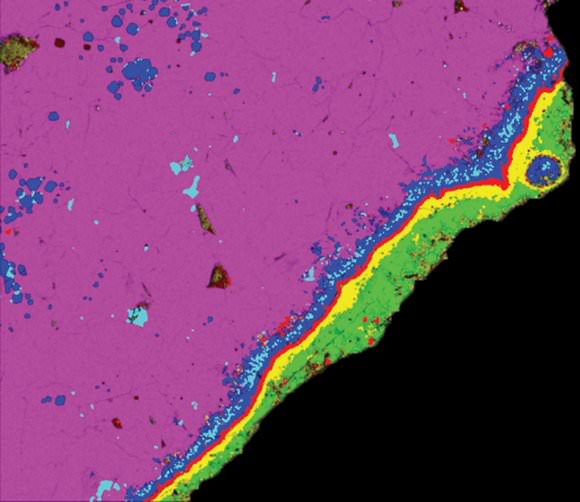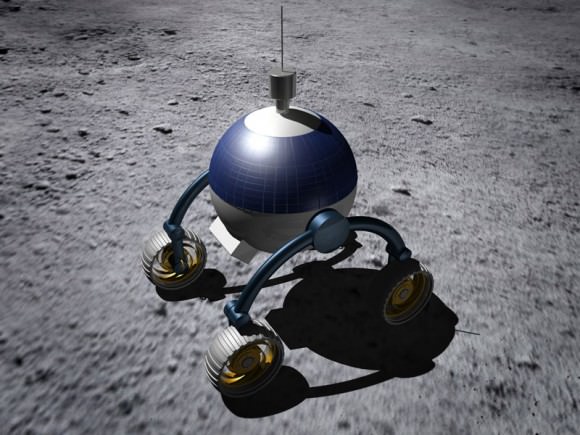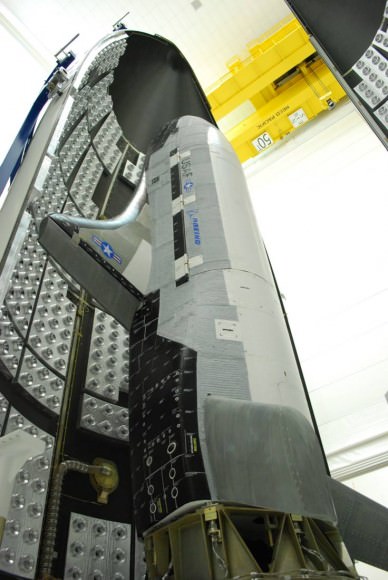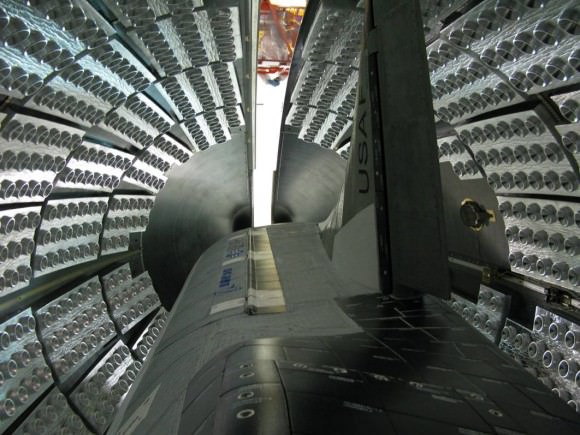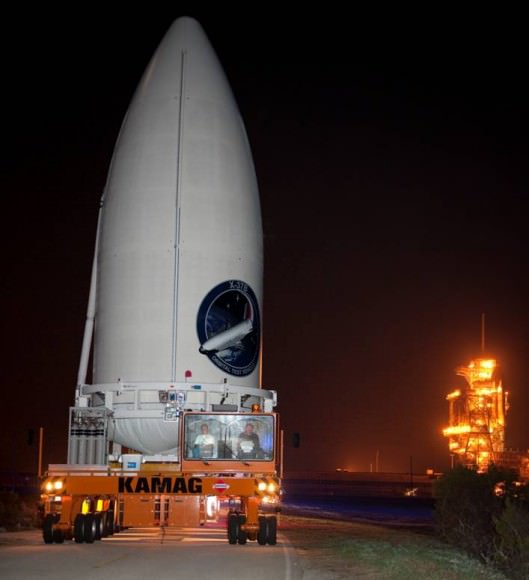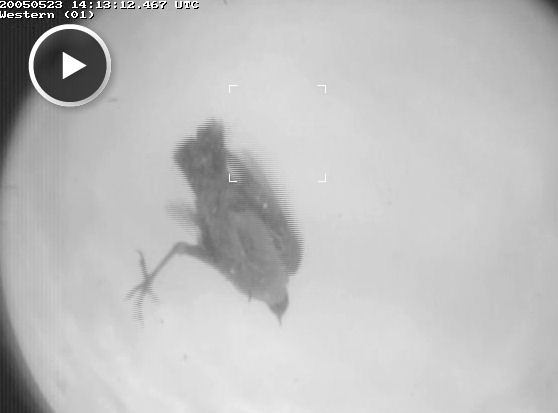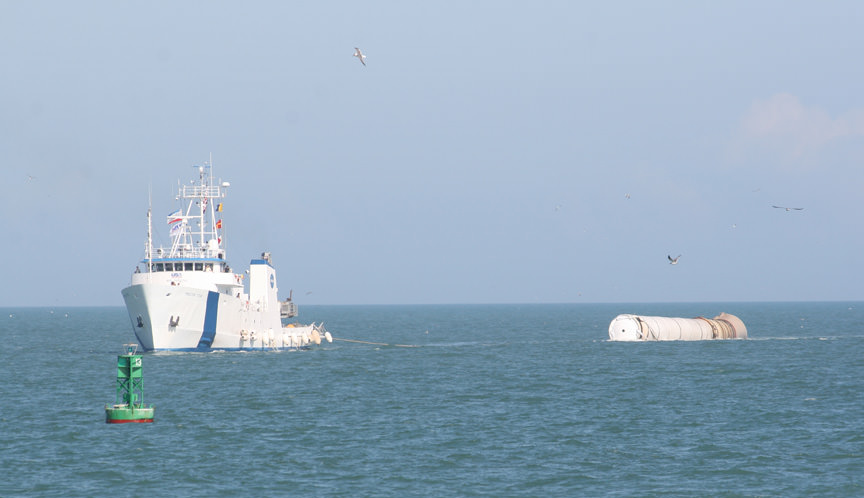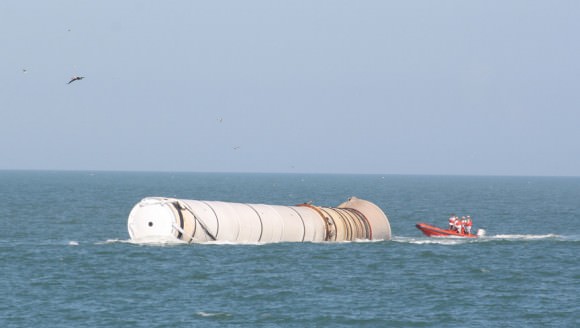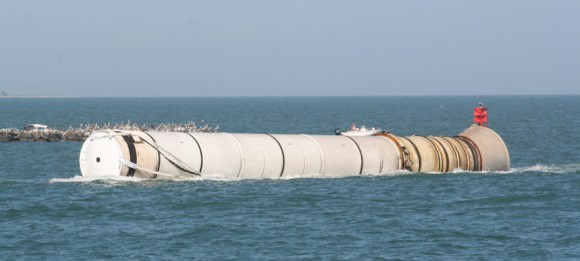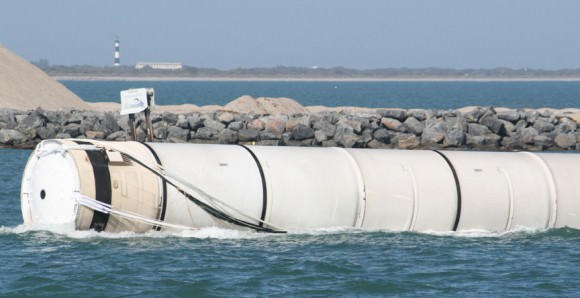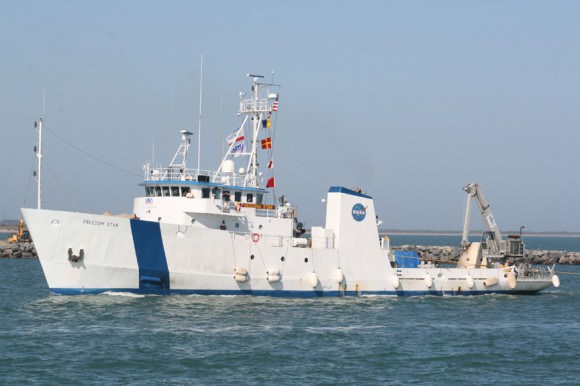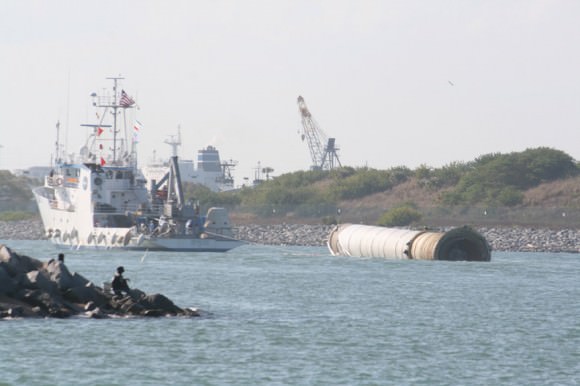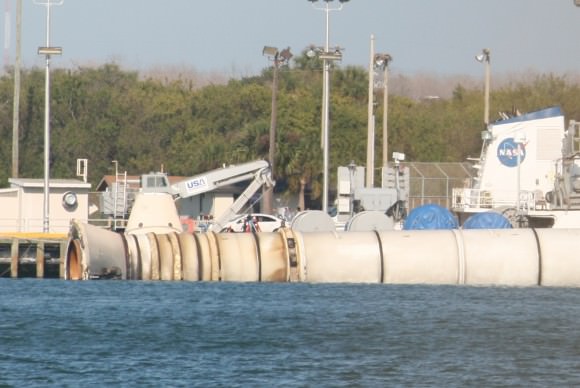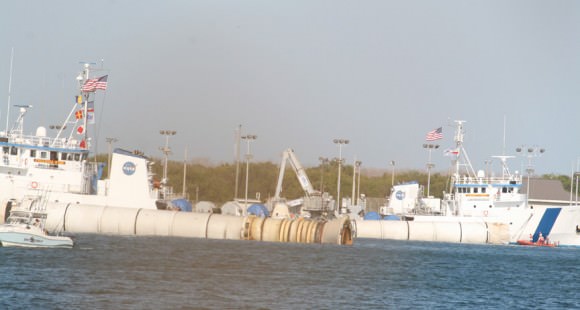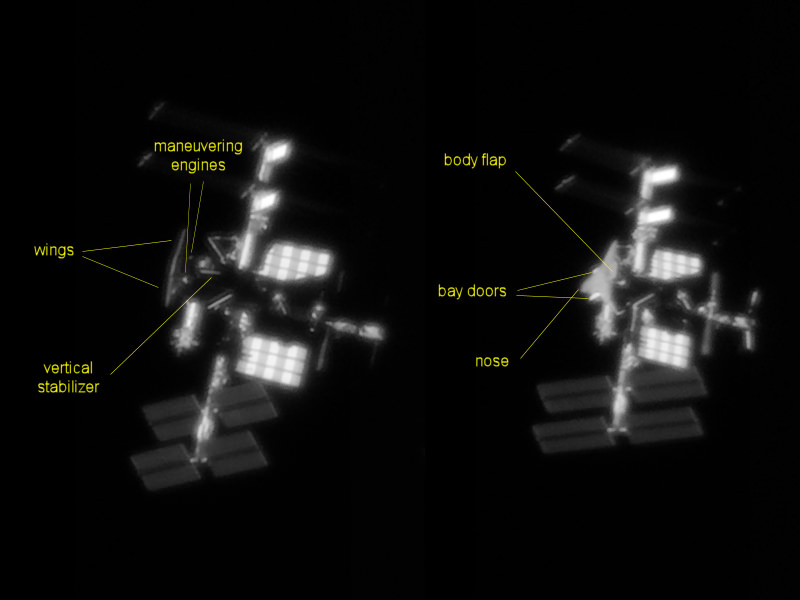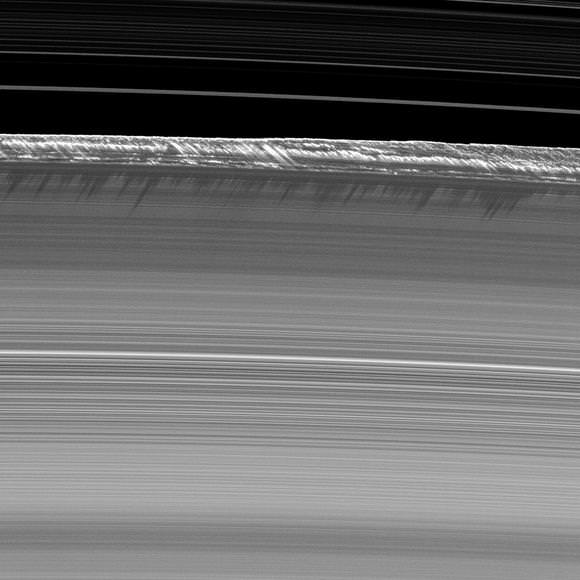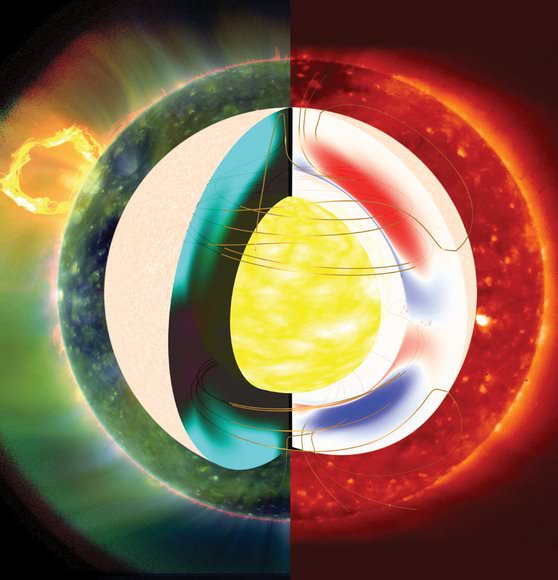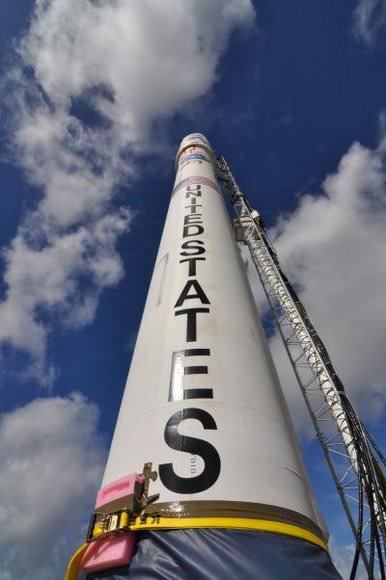[/caption]
Feast your eyes on some of the solar system’s earliest materials: the pink core comprises melilite, spinel and perovskite. The multi-colored rim contains hibonite, perovskite, spinel, melilite/sodalite, pyroxene, and olivine. This close-up reveals part of a pea-sized chunk of meteorite, a calcium-aluminum rich inclusion, formed when the planets in our solar system were still dust grains swirling around the sun — and it can tell an early part of the story about what happened next.

Meteorites have puzzled space scientists for more than 100 years because they contain minerals that could only form in cold environments, as well as minerals that have been altered by hot environments. Carbonaceous chondrites, in particular, contain millimeter-sized chondrules and up to centimeter-sized calcium-aluminum-rich inclusions, like the one shown above, that were once heated to the melting point and later welded together with cold space dust.
“These primitive meteorites are like time capsules, containing the most primitive materials in our solar system,” said Justin Simon, an astromaterials researcher at NASA’s Johnson Space Center in Houston, who led the new study. “CAIs are some of the most interesting meteorite components. They recorded the history of the solar system before any of the planets formed, and were the first solids to condense out of the gaseous nebula surrounding our protosun.”
For the new paper, which appears in Science today, Simon and his colleagues performed a micro-probe analysis to measure oxygen isotope variations in micrometer-scale layers of the core and outer layers of the ancient grain, estimated to be 4.57 billion years old.
All of these calcium-aluminum-rich inclusions, or CAIs, are thought to have originated near the protosun, which enriched the nebular gas with the isotope oxygen-16. In the inclusion analyzed for the new study, the abundance of oxygen-16 was found to decrease outward from the center of the core, suggesting that it formed in the inner solar system, where oxygen-16 was more abundant, but later moved farther from the sun and lost oxygen-16 to the surrounding 16O-poor gas.
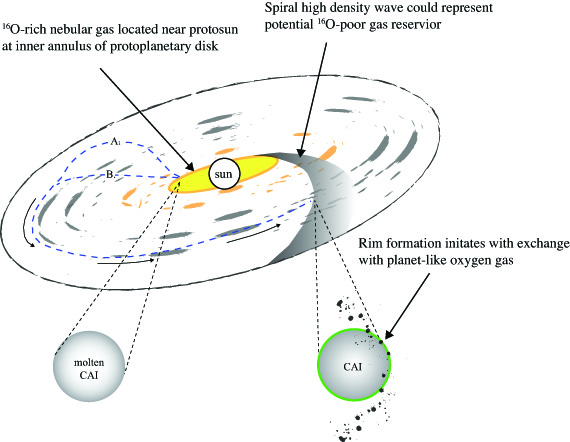
Simon and his colleagues propose that initial rim formation could have occurred as inclusions fell back into the midplane of the disk, indicated by the dashed path A above; as they migrated outward within the plane of the disk, shown as path B; and/ or as they entered high density waves (i.e., shockwaves). Shockwaves would be a reasonable source for the implied 16O-poor gas, increased dust abundance and thermal heating. The first mineral layer outside the core had more oxygen-16, implying that the grain had subsequently returned to the inner solar system. Outer rim layers had varying isotope compositions, but in general indicate that they also formed closer to the sun, and/or in regions where they had lower exposure to the 16O-poor gas from which the terrestrial planets formed.
The researchers interpret these findings as evidence that dust grains traveled over large distances as the swirling protoplanetary nebula condensed into planets. The single dust grain they studied appears to have formed in the hot environment of the sun, may have been thrown out of the plane of the solar system to fall back into the asteroid belt, and eventually recirculated back to the sun.
This odyssey is consistent with some theories about how dust grains formed in the early protoplanetary nebula, or propylid, eventually seeding the formation of planets.
Perhaps the most popular theory explaining the composition of chrondrules and CAIs is the so-called X-wind theory propounded by former UC Berkeley astronomer Frank Shu. Shu depicted the early protoplanetary disk as a washing machine, with the sun’s powerful magnetic fields churning the gas and dust and tossing dust grains formed near the sun out of the disk.
Once expelled from the disk, the grains were pushed outward to fall like rain into the outer solar system. These grains, both flash-heated chondrules and slowly heated CAIs, were eventually incorporated along with unheated dust into asteroids and planets.
“There are problems with the details of this model, but it is a useful framework for trying to understand how material originally formed near the sun can end up out in the asteroid belt,” said coauthor Ian Hutcheon, deputy director of Lawrence Livermore National Laboratory’s Glenn T. Seaborg Institute.
In terms of today’s planets, the grain probably formed within the orbit of Mercury, moved outward through the region of planet formation to the asteroid belt between Mars and Jupiter, and then traveled back toward the sun again.
“It may have followed a trajectory similar to that suggested in the X-wind model,” Hutcheon said. “Though after the dust grain went out to the asteroid belt or beyond, it had to find its way back in. That’s something the X-wind model doesn’t talk about at all.”
Simon plans to crack open and probe other CAIs to determine whether this particular CAI (referred to as A37) is unique or typical.
Source: Science and a press release from the University of California at Berkeley.

